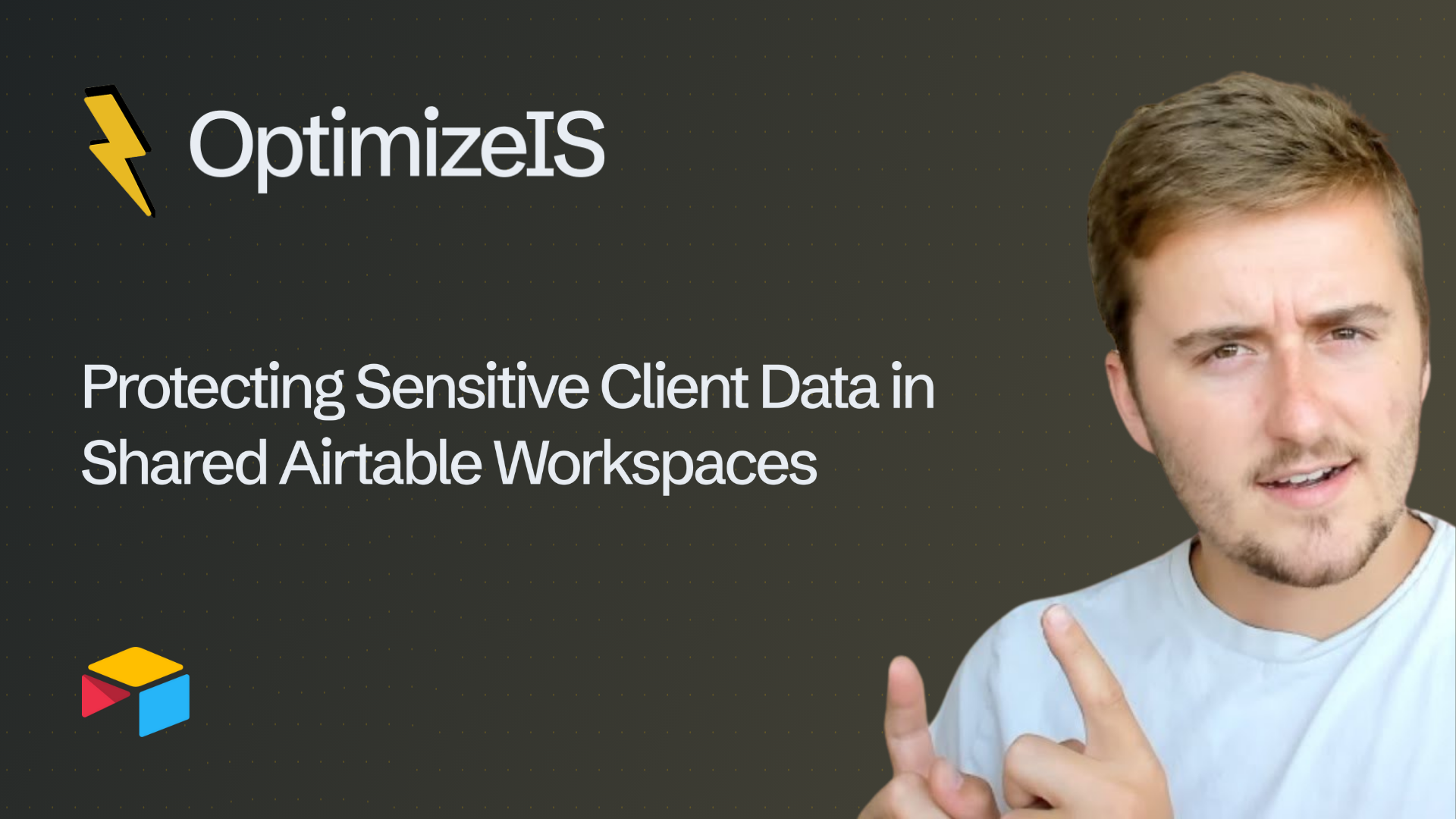Learn Airtable access control best practices. Secure your data using Airtable audit logs and workflow automation to maintain safe business operations.
.png)
As businesses rely more and more on cloud platforms for collaboration and workflow automation, data security isn't just a compliance point—it's paramount. Airtable offers amazing flexibility and ease of use, but when you're dealing with sensitive business information, you absolutely must implement strong security controls.
In this guide, we'll dive into how your organization can drastically strengthen Airtable data security, maintain tight Airtable governance, and build a dependable framework for secure team collaboration across all your departments.
Airtable’s cloud setup is great for real-time collaboration. However, that same flexibility can create risks if permissions aren't managed correctly. Teams handle crucial data every day—from HR records and financials to client details—and all of it has to meet internal policies and external enterprise compliance regulations. Sloppy Airtable permissions management or wide-open access can easily lead to accidental data exposure or compliance nightmares.
That's why prioritizing Airtable governance and setting clear security frameworks is non-negotiable for any organization, especially those operating at the enterprise level.
Airtable provides several robust features designed to protect your sensitive data right out of the box:
1. Role-Based Access Control: With strong Airtable access control, admins define exactly who can access what. Assigning roles (Creator, Editor, Read-Only) ensures that users only interact with data according to their job responsibilities.
2. Audit Logs: Airtable audit logs are essential for enterprises. They provide a detailed trail of user activity, helping administrators spot unauthorized changes, monitor access, and enforce accountability.
3. Data Encryption: All data in Airtable is encrypted both when it’s traveling across the internet (in transit) and when it’s stored (at rest). This ensures your business information remains protected from unauthorized eyes.
4. SSO and 2FA: Integrating Airtable with your Single Sign-On (SSO) provider and enforcing Two-Factor Authentication (2FA) adds a critical defense layer, drastically lowering the risk of credential theft.
5. Compliance Standards: Airtable meets major compliance frameworks like SOC 2 and GDPR. For regulated industries (finance, healthcare, legal), this is a foundational requirement for maintaining enterprise compliance.
Implementing Airtable successfully goes beyond just tweaking settings; it requires a governance model that finds the right balance between necessary control and efficient collaboration.
Here are key best practices to secure your workspace effectively:
1. Define a Governance Policy: Clearly outline how data is created, shared, and stored. This should cover naming conventions, access guidelines, and archiving rules. A clear policy prevents confusion and maintains data quality.
2. Strictly Limit Access: Restrict access based purely on necessity. Use robust Airtable permissions management to ensure only relevant users can view or edit sensitive fields. For example, financial and HR data should be isolated in private, restricted bases.
3. Use Shared Views Externally: If you must share data outside the company (with a client or vendor), never give full base access. Instead, create filtered shared views with Read-Only permissions. This protects your internal systems while still enabling secure team collaboration.
4. Enforce 2FA and SSO: Encourage all users to enable 2FA immediately. For larger teams, enforcing SSO adds vital, centralized identity management.
5. Control API Access: Your Airtable integrations (Slack, Drive, etc.) are powerful, but they are also access points. Generate unique API keys for specific applications and audit these Airtable integrations regularly.
6. Monitor Activity: Proactively monitor for unusual behavior, like mass deletions or sharing outside the organization. Admins must use Airtable audit logs to set up alerts for suspicious activity.
7. Back Up Data: While Airtable has version history, regularly exporting and storing backups in a secure external location adds an extra layer of protection against human error or data loss.
Security should actually enable collaboration, not hinder it.
· Tiered Workspaces: Structure your workspaces by function (e.g., HR, Finance) so sensitive data stays compartmentalized.
· Field-Level Permissions: Use advanced permissions to restrict visibility on specific columns—hiding confidential data (like salaries) from general team members.
· Monitor External Access: When collaborating externally, review access rights often and revoke permissions immediately after the project or partnership ends.
· Govern Automations: All workflow automation and process automation rules need to be tested thoroughly in sandbox bases before being deployed live. This prevents errors that could compromise data integrity.
A well-governed Airtable workspace isn't just efficient—it's secure, compliant, and scalable. By implementing smart Airtable data security practices and establishing strong Airtable governance, businesses can collaborate confidently while safeguarding sensitive information.
From meticulous Airtable permissions management to achieving robust enterprise compliance, every security step contributes to a stronger foundation for sustainable business operations.

Secure your client data in Airtable using granular access controls, field-level restrictions, and strong data governance in Airtable for privacy compliance.
.png)
Transform creative project management by connecting Airtable and Canva. Learn how Airtable automation and integrations eliminate friction for Airtable for creative teams.
.png)
Automate inter-department workflows with Airtable to eliminate manual team handoffs, boost project collaboration, and achieve real-time project status updates.